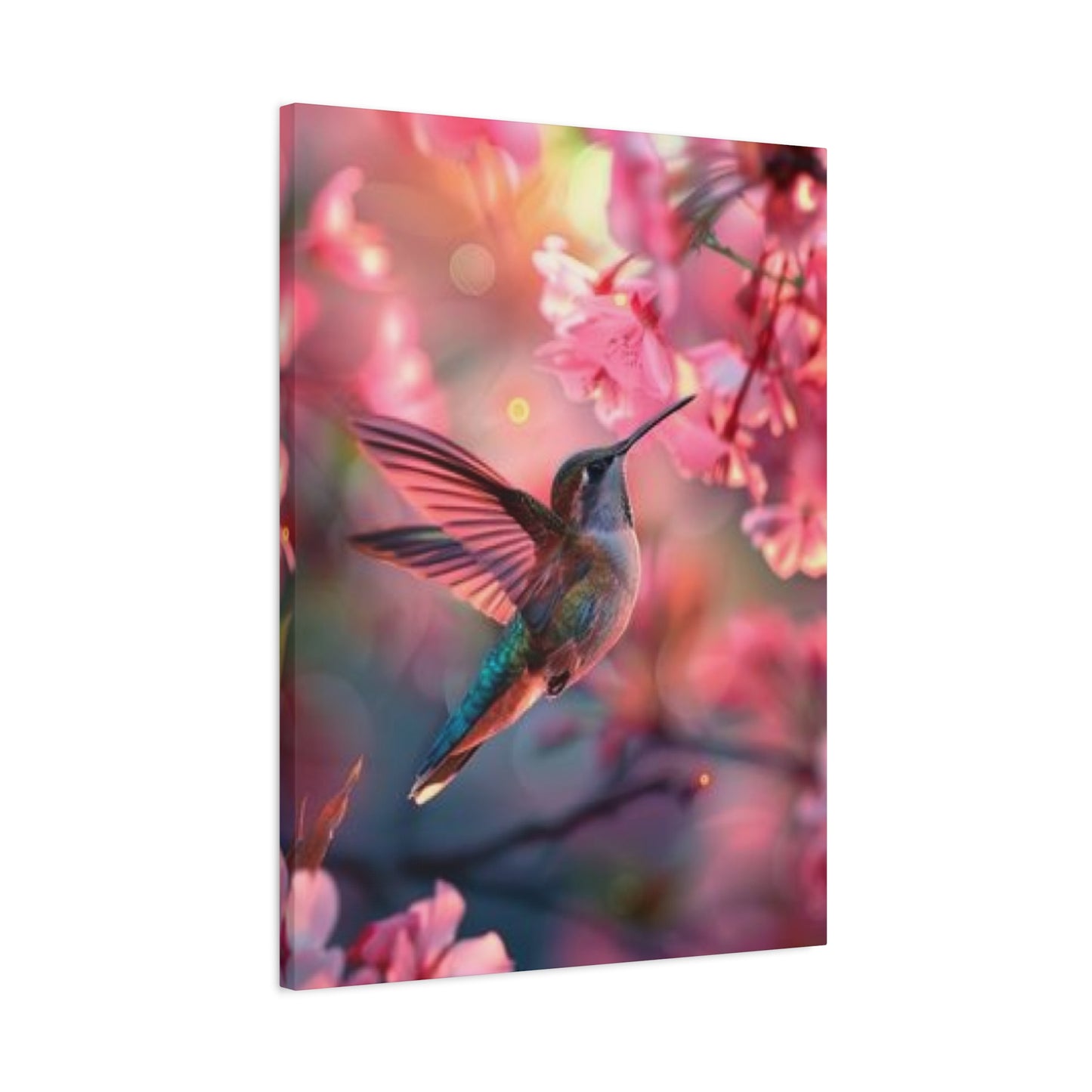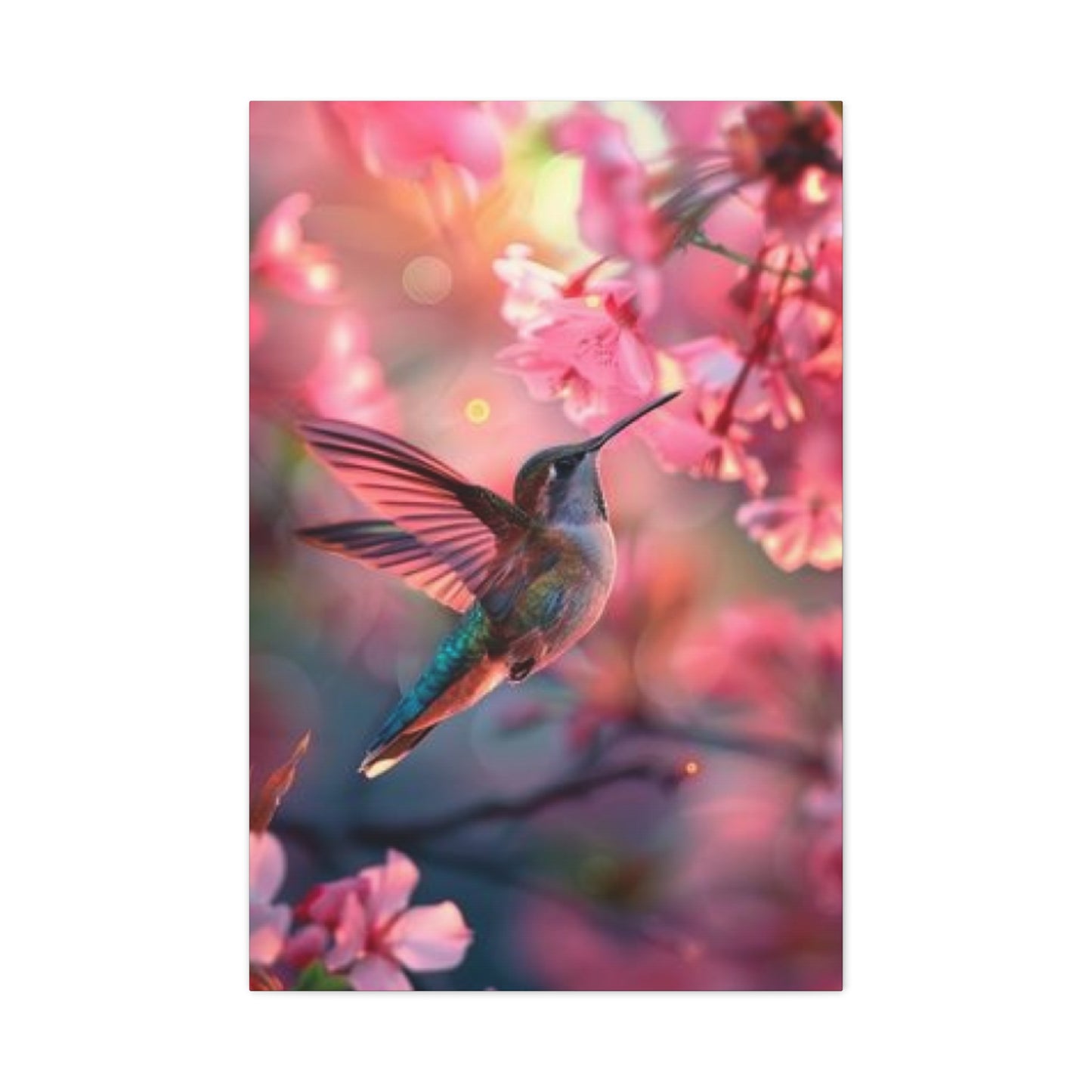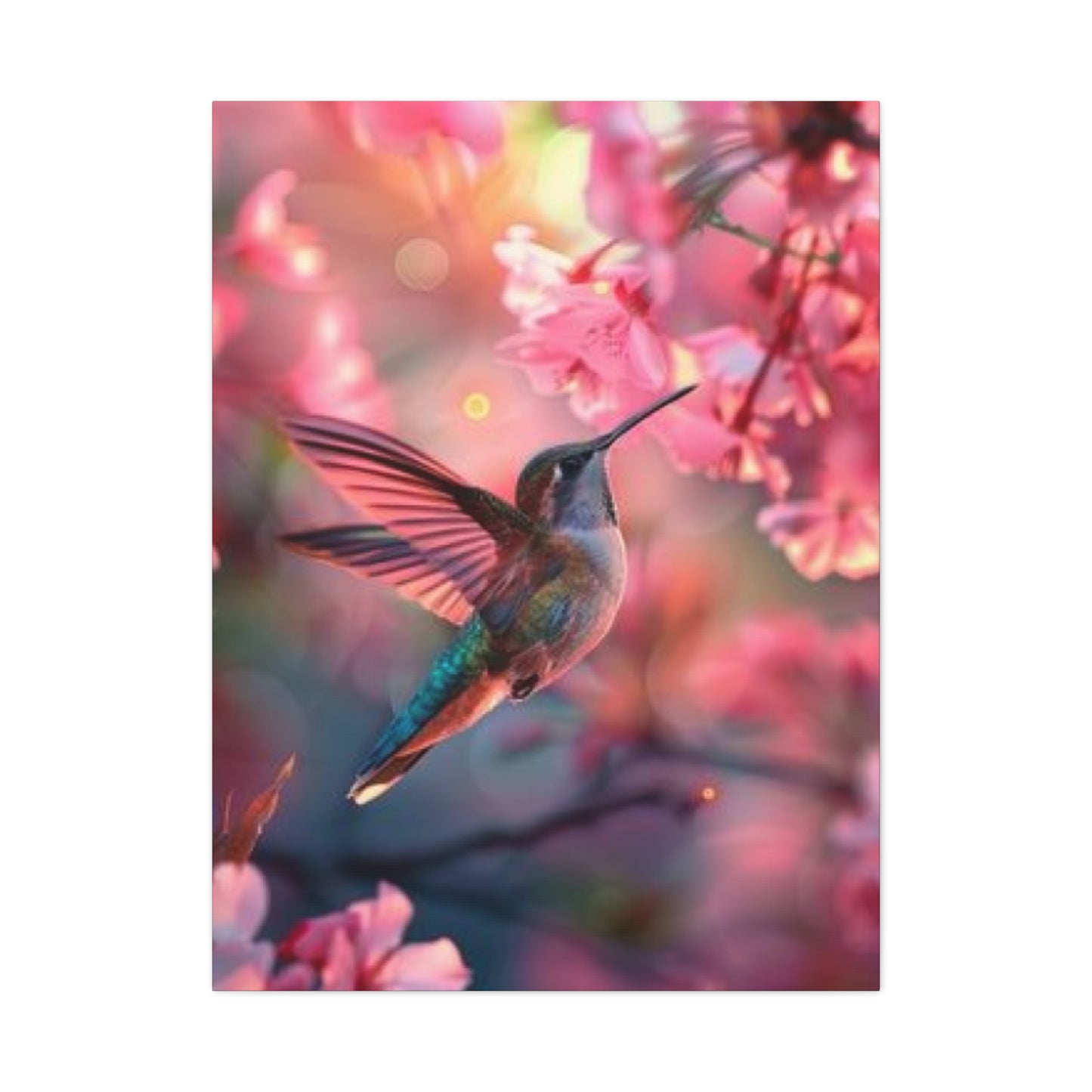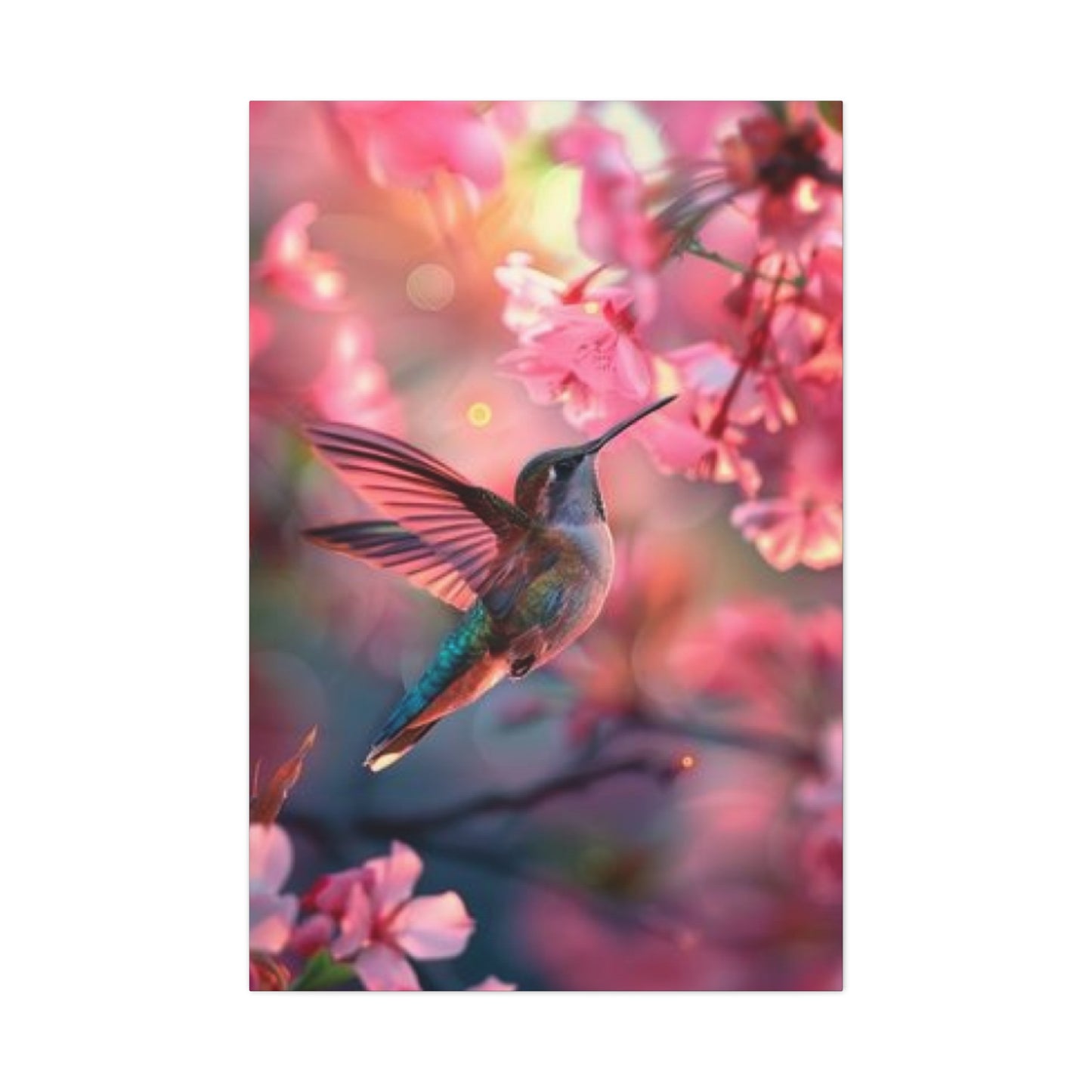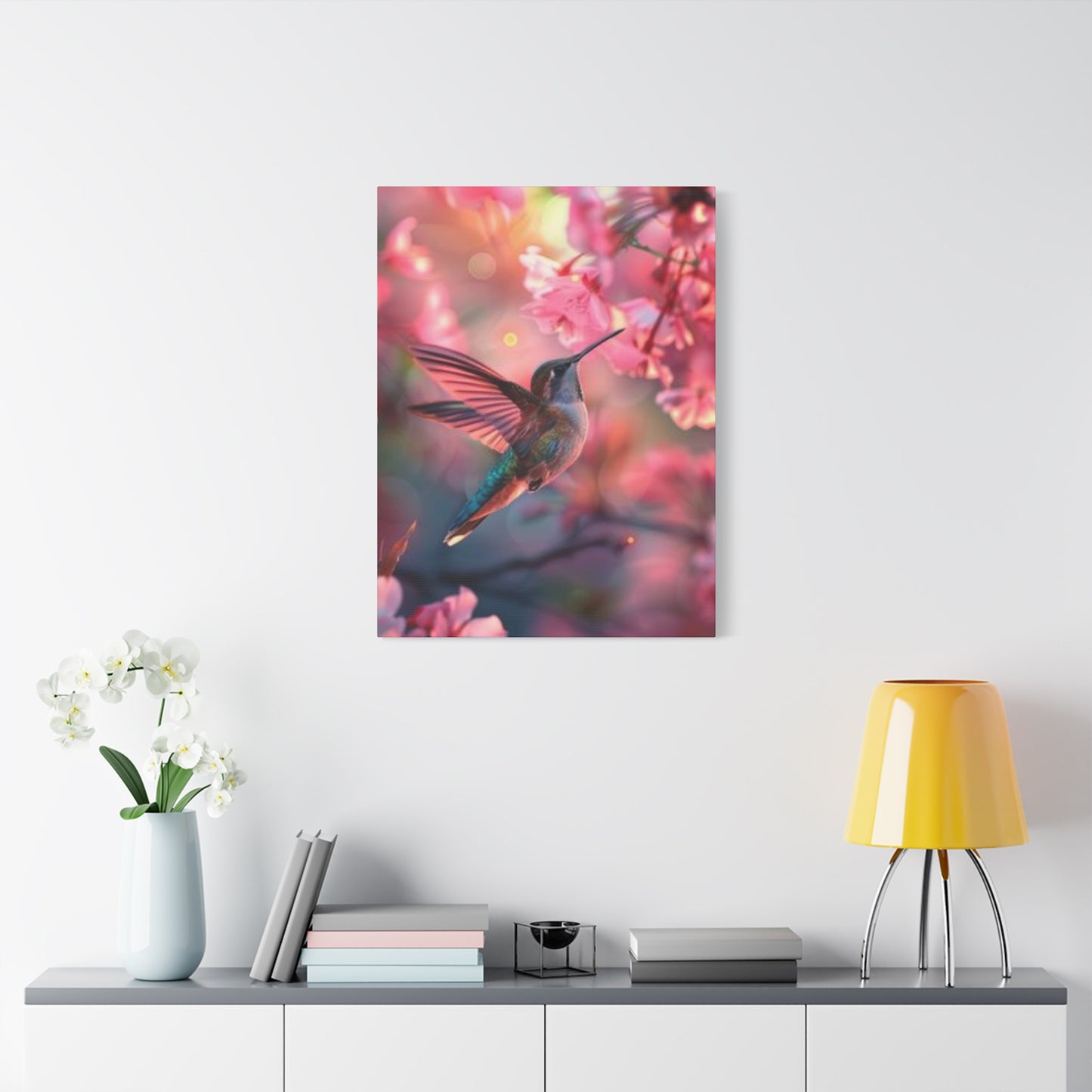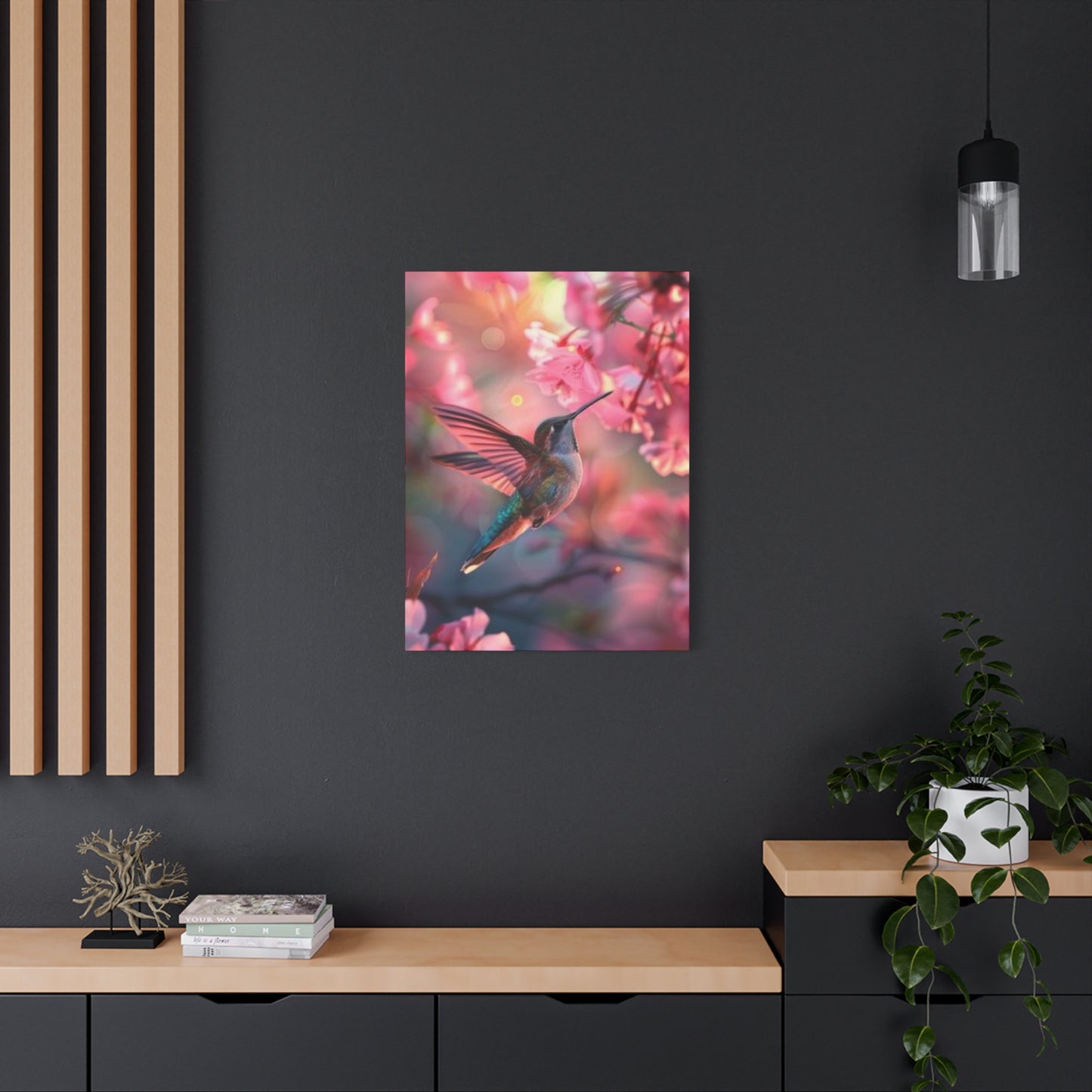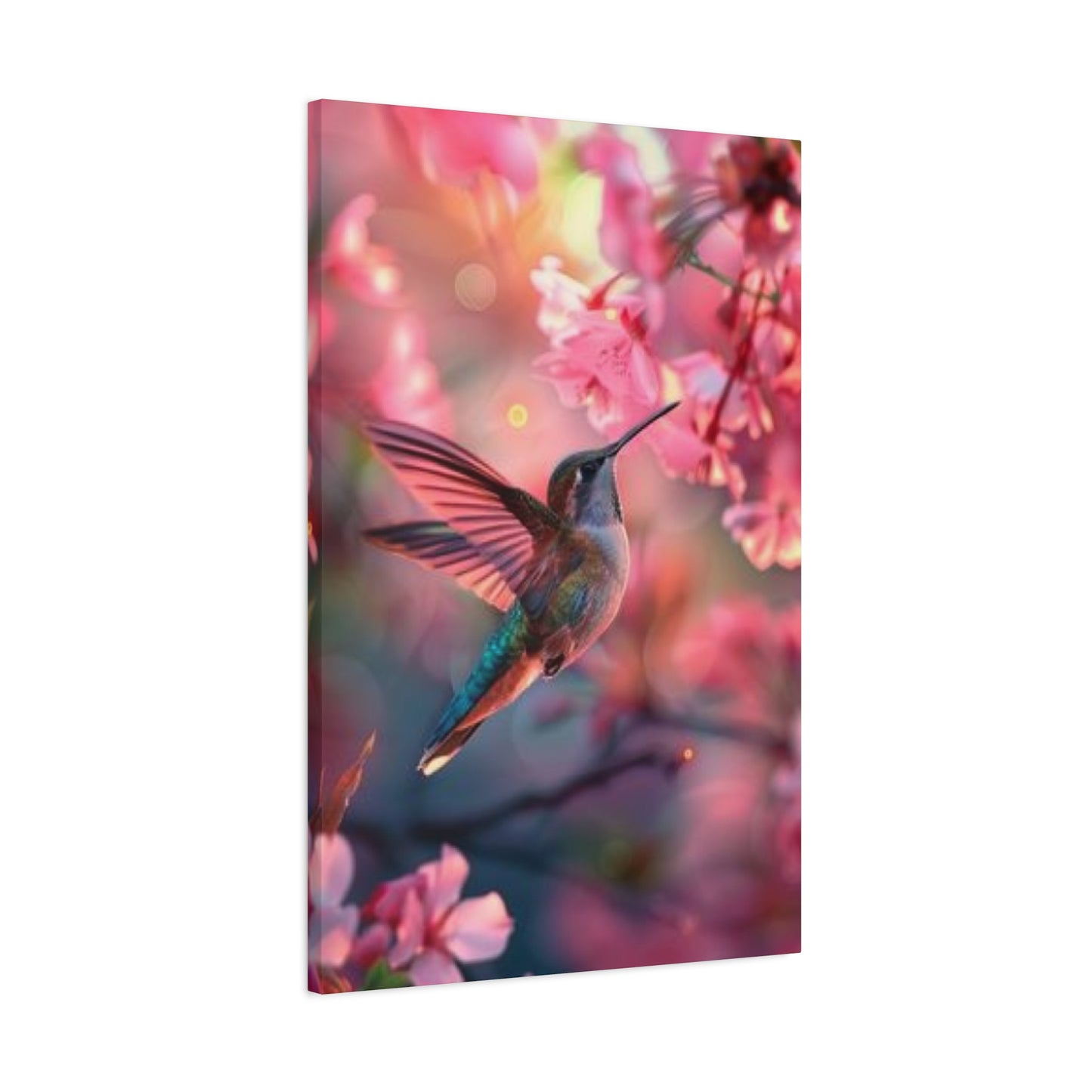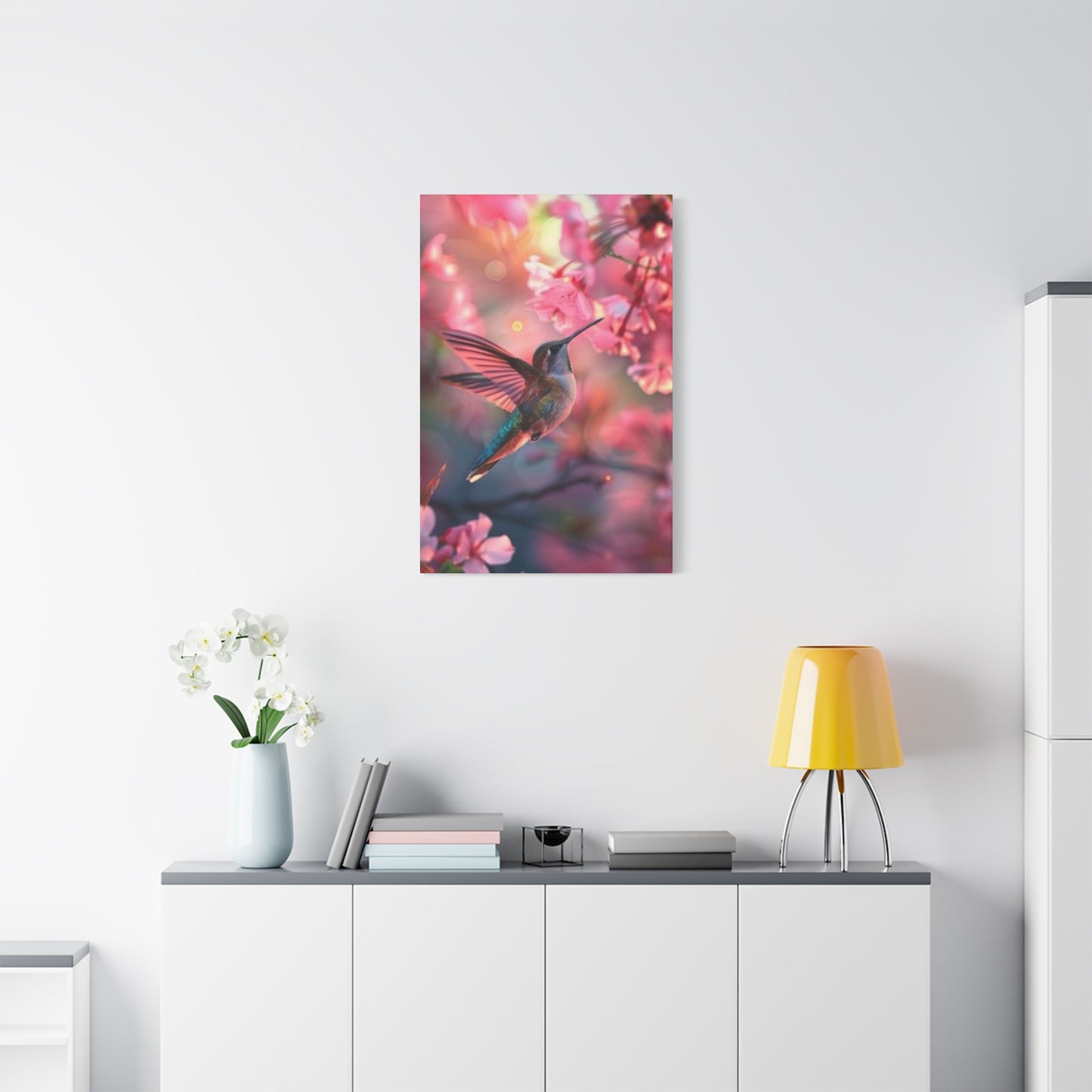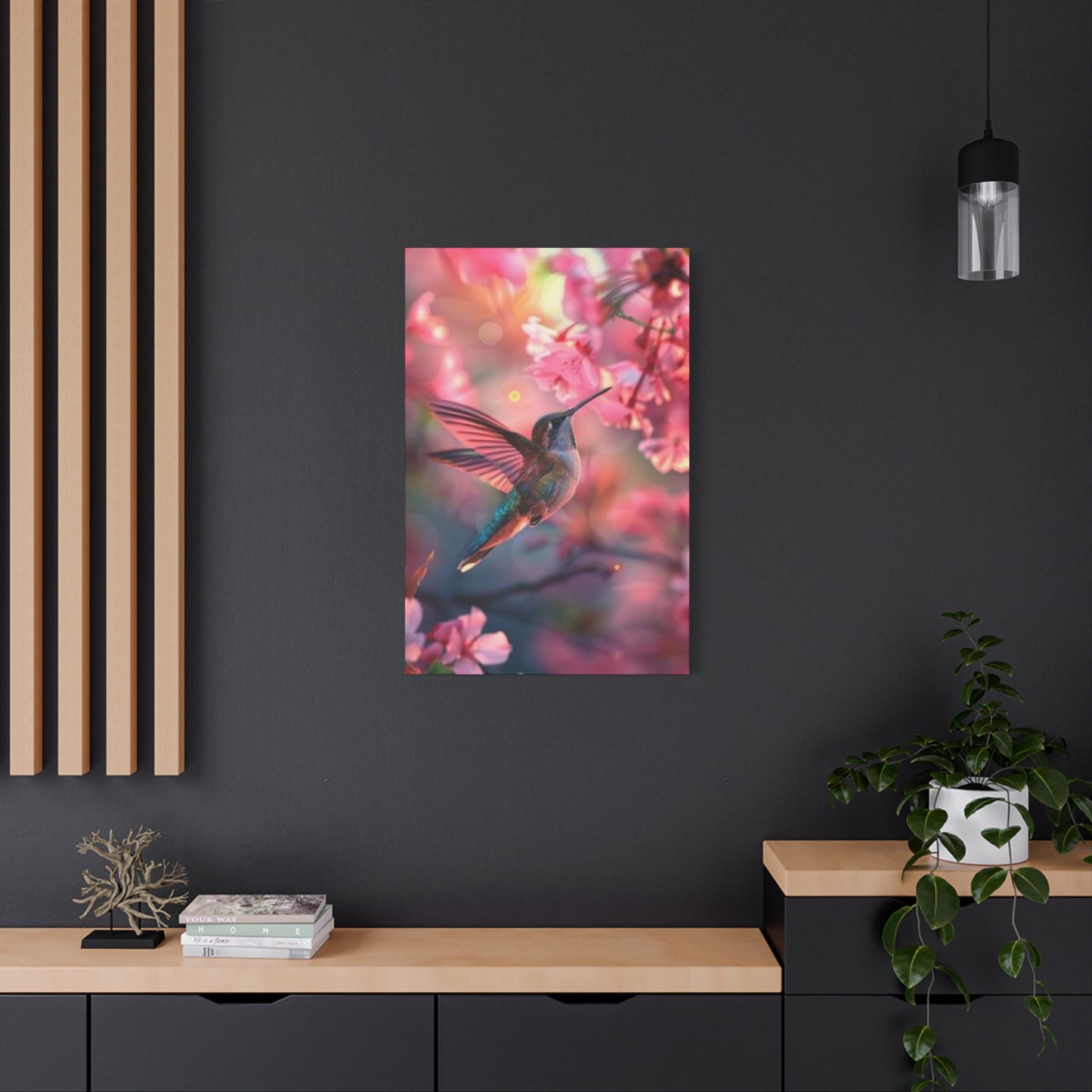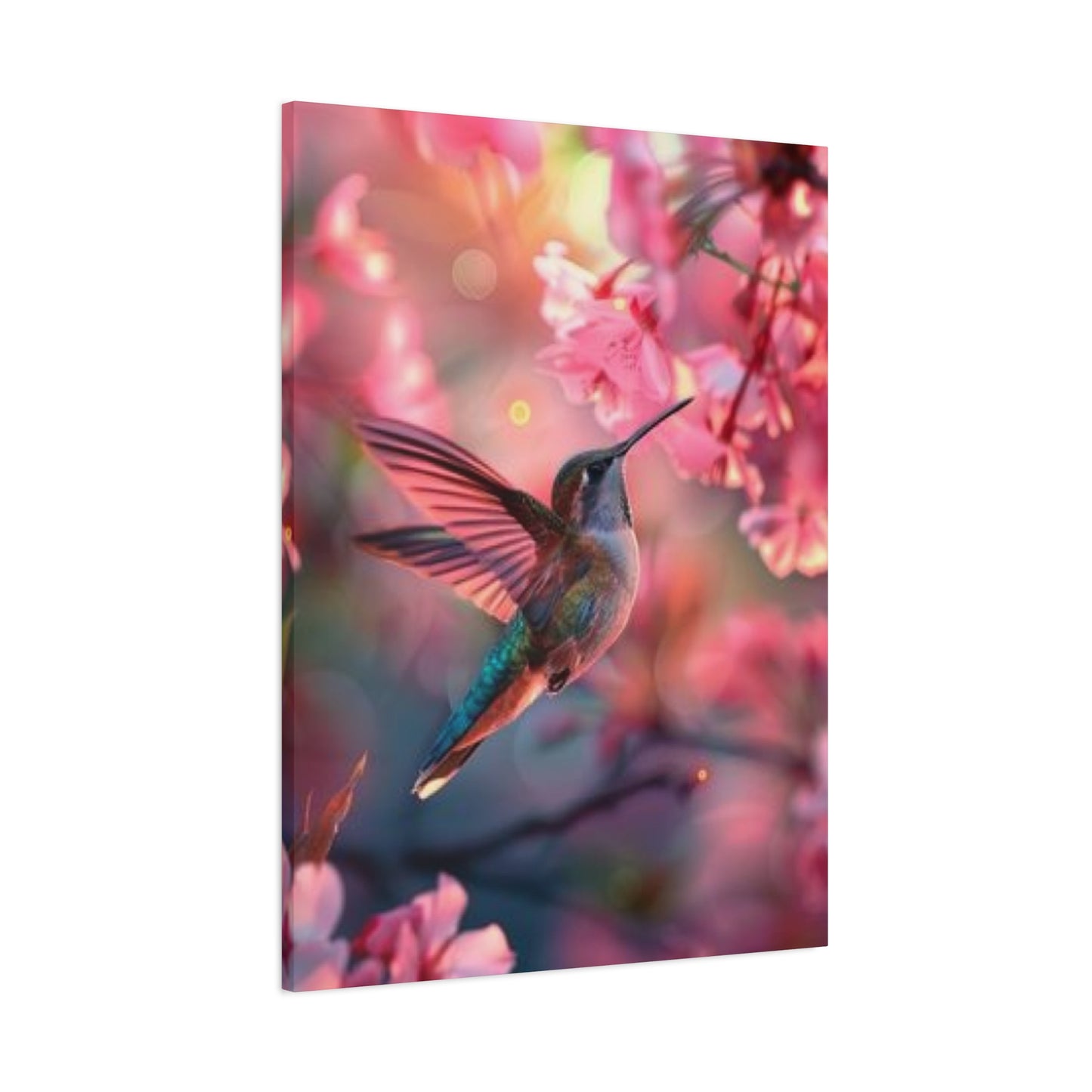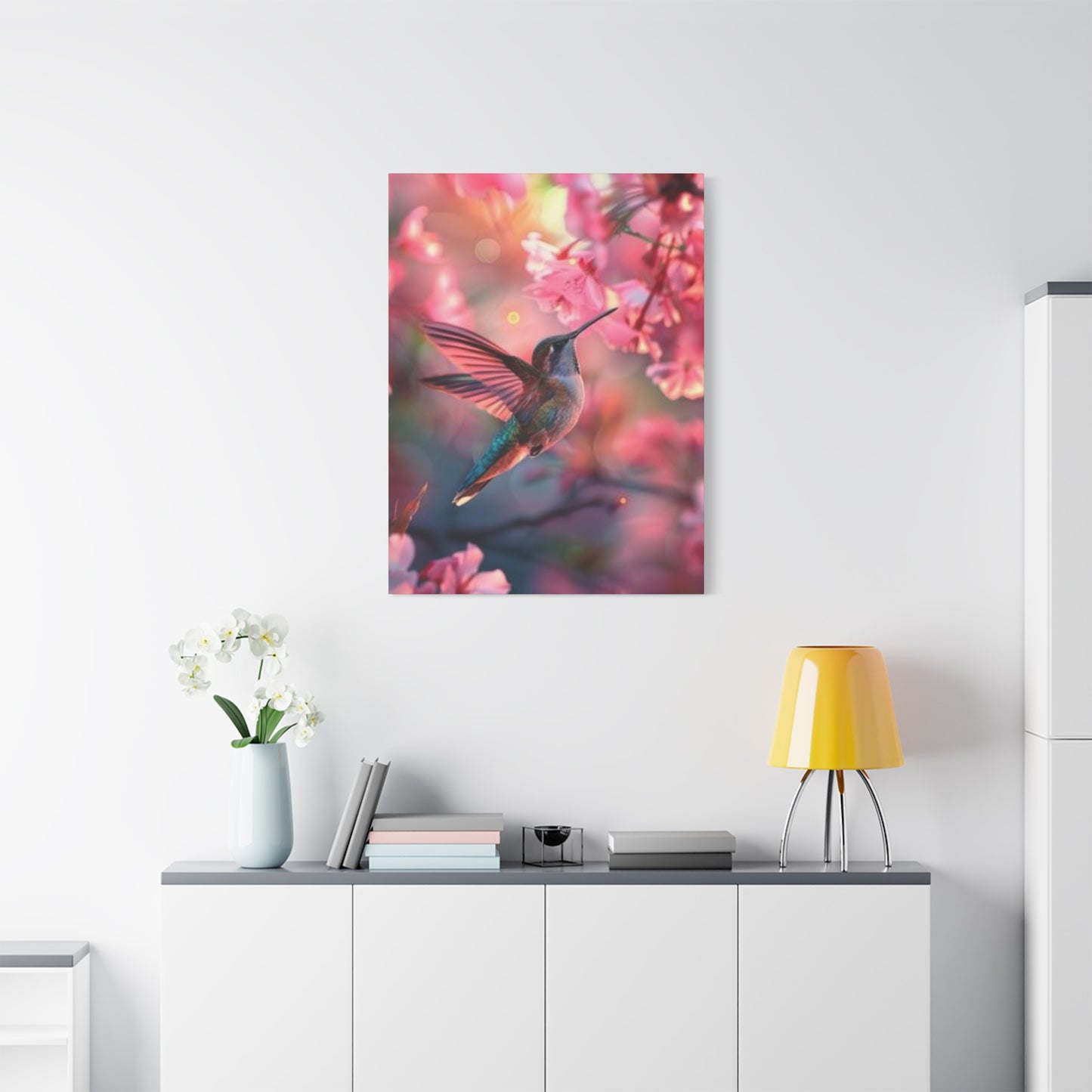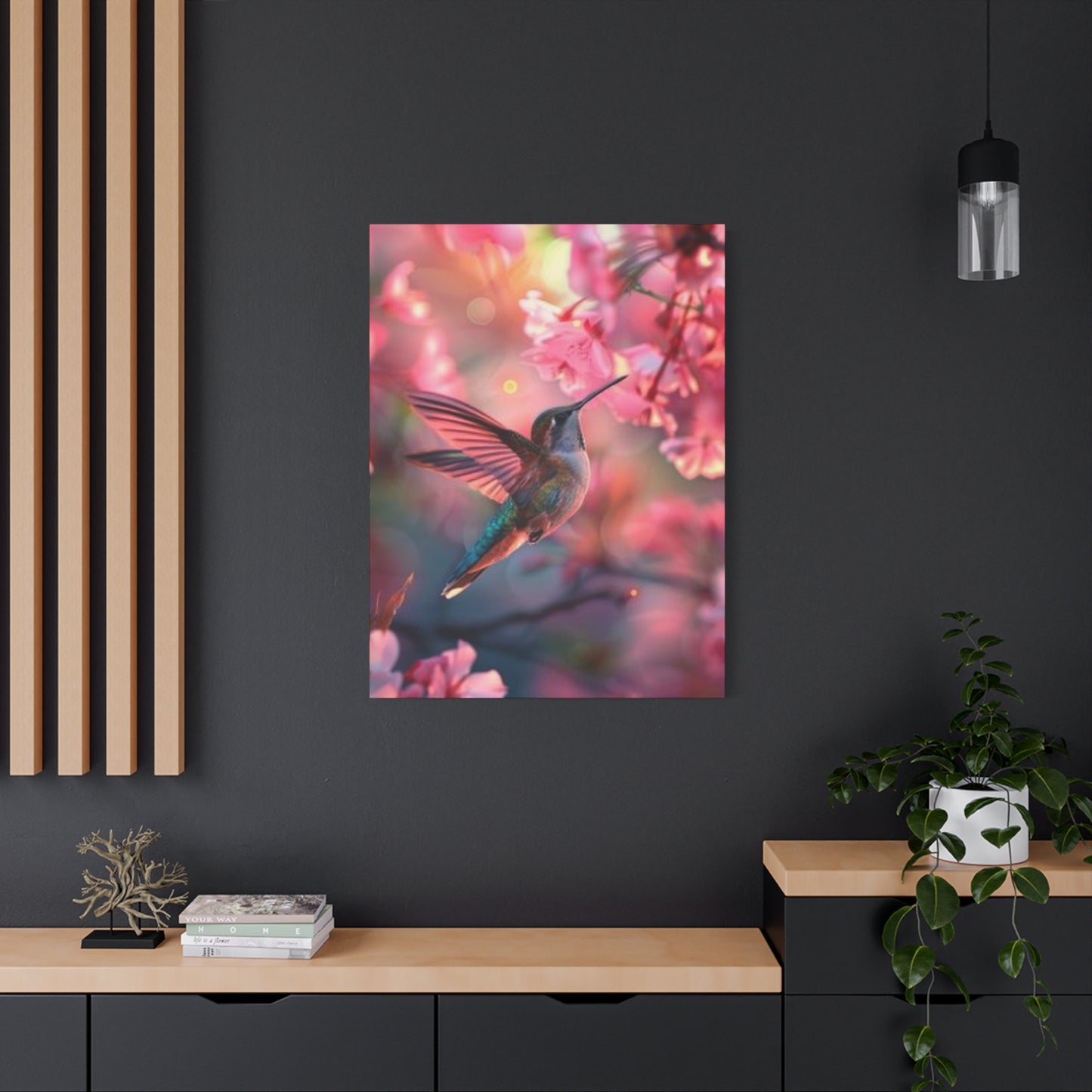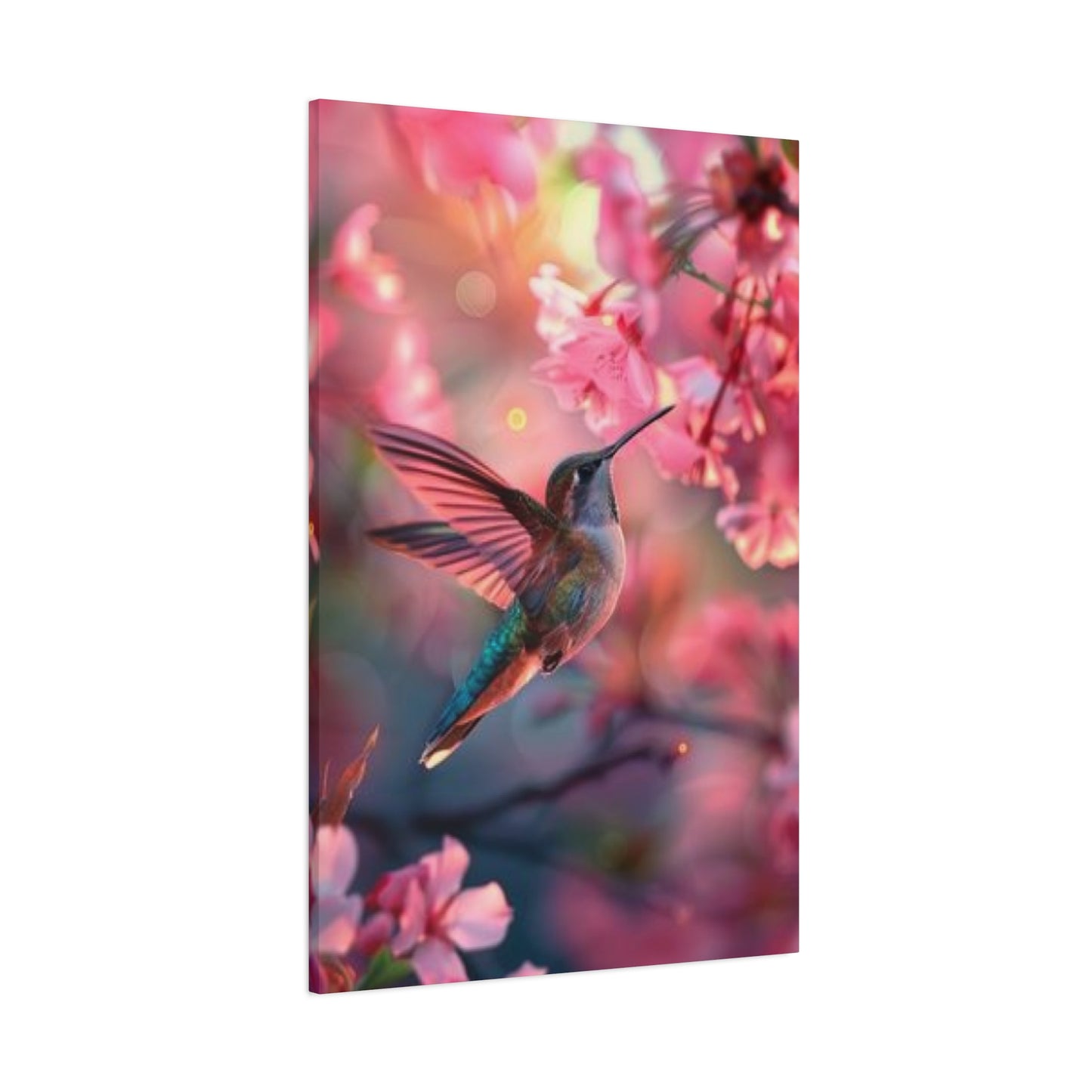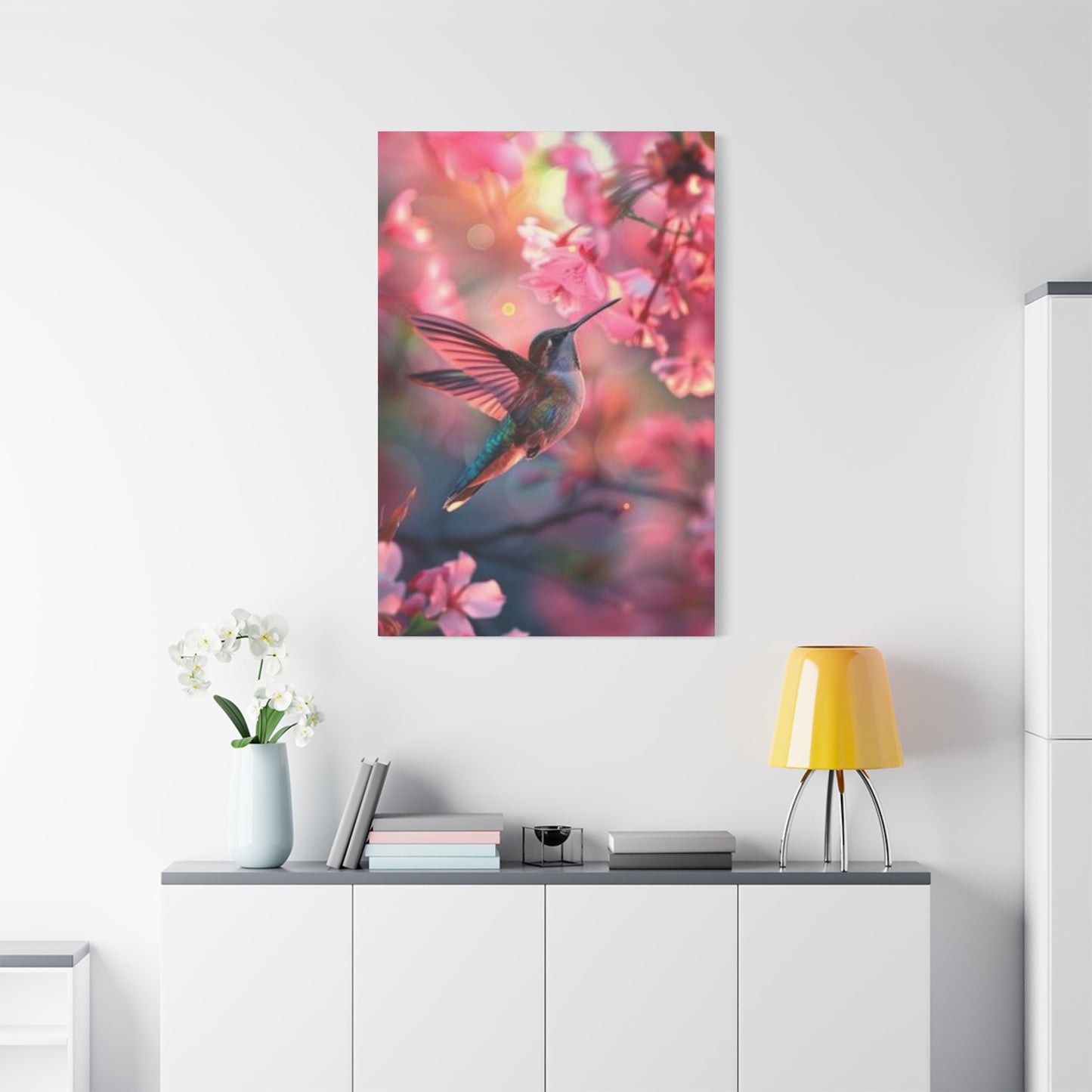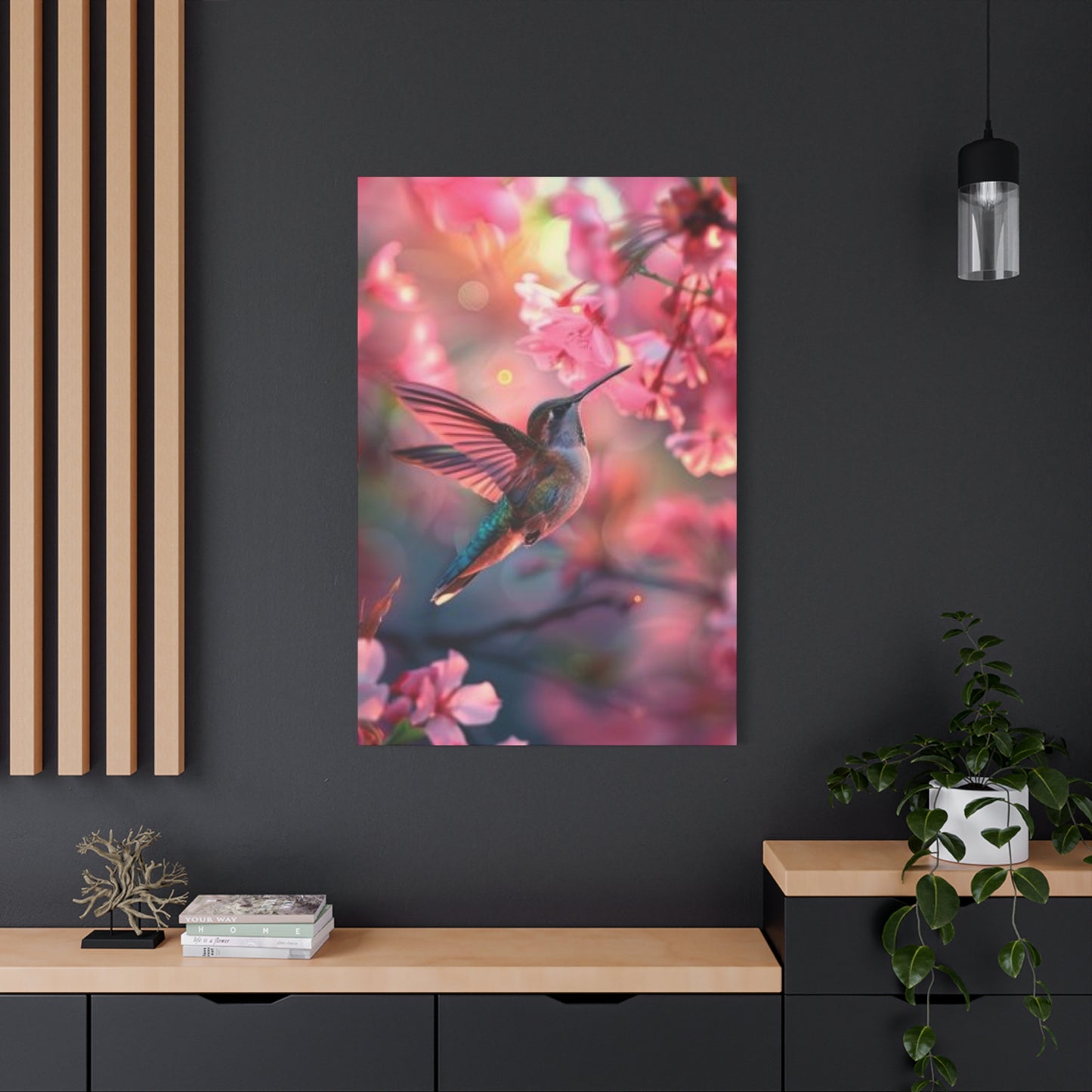Capturing Avian Elegance: A Deep Dive into Pink Hummingbird Candid Painting Wall Art Canvas Prints
The world of interior design and personal expression is often a quest for that single, perfect piece that not only fills a space on a wall but also fills a room with emotion, character, and a story. It is a search for an object that transcends mere decoration to become a focal point of conversation, a source of daily inspiration, and a true reflection of the inhabitant's soul. In this vast landscape of artistic choices, the emergence of a specific genre, such as the pink hummingbird candid painting wall art canvas prints, offers a unique and compelling solution. This art form is not just a visual treat; it is a multifaceted experience that combines the delicate beauty of nature, the spontaneity of a captured moment, and the timeless appeal of painted art, all rendered on a modern and accessible medium.
It speaks to a desire for tranquility, a love for the natural world, and an appreciation for artistry that feels both intimate and grand. The very name itself is a tapestry of concepts, each contributing to the overall allure. The "pink hummingbird" is a subject of fantasy and grace, the "candid painting" suggests a moment of pure, unfiltered life, and "wall art canvas prints" points to a contemporary method of bringing this vision into our homes with texture and presence. This exploration delves deep into every facet of this captivating art form, examining its aesthetic qualities, its symbolic weight, its psychological impact, and its practical application in creating spaces that are not just lived in, but truly alive.
The Immediate Allure of Avian Artwork
The initial encounter with a pink hummingbird candid painting is often one of immediate captivation. There is something universally appealing about the depiction of a hummingbird, a creature that embodies a paradox of stillness in motion. Frozen in time by the artist's brush, its wings, which in reality beat faster than the eye can see, are rendered with a clarity that allows for deep appreciation. The choice of pink, a color often associated with softness, romance, and gentle affection, lends the creature an almost mythical quality, elevating it from a simple bird to a symbol of delicate magic. This artwork draws the viewer in, inviting them to ponder the fleeting moment it represents.
Was the bird hovering to sip nectar from an unseen flower? Was it a momentary pause in a frantic, energetic dance? The "candid" nature of the portrayal suggests that this is not a staged, formal portrait of a bird, but rather a secret glimpse into its world, a moment stolen from time. This sense of authenticity and spontaneity creates a powerful connection between the viewer and the subject. The art feels alive, dynamic, and personal. Displayed on a canvas, the texture of the material adds another layer of depth, giving the print a tangible quality that flat paper prints often lack. The weave of the canvas can catch the light in subtle ways, enhancing the painted effect and making the artwork feel more like an original masterpiece. This combination of an enchanting subject, an intimate style, and a classic medium is what creates the instant and enduring appeal of these particular pieces of wall art.
Deconstructing the Subject: The Significance of the Pink Hummingbird
The choice of a pink hummingbird as the central subject is a masterstroke of artistic and symbolic layering. In the natural world, while some hummingbirds possess iridescent feathers that can reflect pinkish hues, a truly "pink" hummingbird exists primarily in the realm of artistic imagination. This deliberate departure from strict biological reality is what imbues the artwork with its sense of wonder and enchantment. It signals to the viewer that this is not a scientific illustration but an emotional and aesthetic interpretation of nature. The hummingbird itself is a powerful symbol across many cultures, universally representing joy, lightness of being, adaptability, and resilience. Its ability to fly backward, forward, up, and down with incredible agility speaks to a mastery of life's challenges and the ability to navigate change with grace.
It is a messenger of joy, reminding us to seek out the sweetness in life, much like it seeks nectar from flowers. By rendering this powerful symbol in shades of pink, the artist adds another layer of meaning. Pink is the color of universal love, compassion, and gentleness. It softens the hummingbird's energetic and sometimes fierce nature, creating a harmonious balance between strength and tenderness. This specific artistic choice makes the pink hummingbird candid painting a particularly potent piece for spaces meant for relaxation, healing, and connection, such as a bedroom, a nursery, or a quiet reading nook. It becomes more than just a picture of a bird; it is an icon of gentle joy, a reminder to approach life with a light heart and an open, loving spirit.
The Mystique of the Hummingbird in Global Cultures
The hummingbird, despite its tiny size, holds a colossal presence in the mythology and folklore of cultures around the world, particularly in the Americas where it is native. This deep cultural resonance adds a significant layer of meaning to any artwork depicting the creature, including a pink hummingbird candid painting. In ancient Aztec civilization, the hummingbird was a sacred and powerful symbol. Huitzilopochtli, one of their most important deities, was the god of the sun and war, often depicted as a hummingbird or adorned with its feathers. The Aztecs believed that fallen warriors were reincarnated as hummingbirds, allowing them to fly eternally in the paradise of the sun god. This association imbues the bird with concepts of fierce spirit, resurrection, and divine light.
In Native American traditions, the hummingbird is often seen as a healer and a bringer of love, joy, and good luck. Its tireless quest for nectar is seen as a metaphor for finding the good and beautiful in life. Some legends tell of the hummingbird using its long beak to retrieve lost fire for humanity or stitching together the sky and earth with its rapid, darting flight patterns. These stories cast the hummingbird as a benevolent and heroic figure, a tiny creature with a vast and powerful spirit. When we view a pink hummingbird painting on canvas, we are not just looking at a bird; we are tapping into this rich vein of symbolism. The artwork becomes a conduit for these ancient meanings, bringing concepts of courage, healing, joy, and divine connection into our modern living spaces. It serves as a reminder that even the smallest beings can possess incredible strength and significance.
A Room-by-Room Guide to Placing Your Hummingbird Art
The versatility of a pink hummingbird candid painting wall art canvas print allows it to enhance the atmosphere of nearly any room in the home. However, strategic placement can maximize its aesthetic and emotional impact. In the living room, this artwork can serve as a beautiful focal point above a sofa or mantelpiece. Its gentle and captivating subject matter makes it an excellent conversation starter, creating a welcoming and serene ambiance for guests. Choose a larger size to make a statement and anchor the room's decor. In the bedroom, the hummingbird's symbolism of joy and the calming qualities of the color pink combine to create a perfect atmosphere for rest and rejuvenation. Hung opposite the bed or in a quiet corner, it can be the first thing you see in the morning and the last thing at night, promoting positive and peaceful thoughts.
For a home office, the hummingbird's energetic nature and resilience can be a source of subtle inspiration. It represents focus, agility, and the pursuit of goals, making it an ideal companion for a productive workspace. Its beauty can also provide a welcome visual break during a busy day. In a nursery or child's room, the whimsical and gentle nature of a pink hummingbird painting can spark imagination and create a nurturing environment. Its soft colors and charming subject are soothing and cheerful. Even in a hallway or entryway, a smaller version of the print can add a touch of elegance and a warm welcome, offering a glimpse of nature and beauty to all who pass through the space.
Designing a Tranquil Bedroom Sanctuary
The bedroom is our most personal space, a sanctuary for rest, intimacy, and renewal. The art we choose for this room has a profound effect on our mood and quality of sleep. A pink hummingbird candid painting wall art canvas print is an exceptionally fitting choice for creating a tranquil bedroom environment. The hummingbird, as a symbol of lightness and joy, can help to lift away the stresses of the day, while the "candid" style of the painting promotes a sense of ease and naturalness. The color pink, especially in its softer, more muted tones, is psychologically linked to calm and relaxation. It is a color that feels nurturing and safe, which is precisely the atmosphere one wants to cultivate in a bedroom.
To integrate the artwork effectively, consider hanging it on the wall you face when lying in bed, allowing it to be a peaceful focal point for meditation or quiet contemplation before sleep. Alternatively, placing it above the headboard can anchor the bed as the centerpiece of the room. Pair the artwork with soft, natural textiles in complementary colors—creamy whites, soft grays, or subtle greens—to enhance the serene feel. Bedding with a simple floral or botanical pattern can also echo the natural theme of the artwork without overwhelming it. By thoughtfully incorporating a pink hummingbird canvas print, you can transform your bedroom from a simple place to sleep into a true sanctuary, a personal retreat that soothes the mind and nurtures the spirit.
Fostering Creativity in a Home Office Environment
The modern home office is more than just a place for work; it is a space where focus, innovation, and creativity must flourish. The visual environment plays a critical role in stimulating the mind, and the right piece of art can be a powerful tool for inspiration. A pink hummingbird candid painting is an excellent choice for an office setting for several reasons. The hummingbird itself is a metaphor for immense productivity and efficiency. These tiny birds have an incredibly high metabolism and are in constant, purposeful motion, symbolizing the very energy and drive needed to tackle complex tasks and projects. Their ability to hover and change direction with lightning speed speaks to the mental agility and adaptability required in today's professional world.
The "candid" aspect of the painting, capturing a spontaneous moment, can serve as a reminder to embrace creative thinking and to look for beauty and opportunity in the unexpected. The artistic nature of the piece encourages a departure from rigid, corporate thinking, fostering a more open and innovative mindset. The infusion of pink adds a touch of softness and humanity to the workspace, preventing it from feeling too sterile or stressful. It promotes a sense of well-being and emotional balance, which is essential for sustained productivity. Placing a pink hummingbird canvas print in your line of sight—perhaps on a wall behind your computer monitor or on an adjacent wall—can provide a source of visual inspiration, a mental "reset" button that allows you to look away from the screen and reconnect with a symbol of grace, energy, and boundless potential.
Color Palettes That Harmonize with Pink Hummingbird Art
Integrating a piece of art with a distinct color like pink requires a thoughtful approach to the room's overall color palette. A pink hummingbird candid painting can be the star of the show or a harmonious player in a larger color scheme. For a serene and sophisticated look, pair the artwork with a neutral palette. Walls painted in soft grays, warm beiges, or creamy off-whites create a perfect backdrop that allows the pinks in the canvas to stand out without overwhelming the space. This approach is ideal for minimalist, Scandinavian, or modern interior designs. To create a more vibrant and nature-inspired feel, draw upon the colors of a garden. Complementary greens, ranging from soft sage to deep forest green, will make the pink in the artwork pop beautifully, as green is the opposite of red (from which pink is derived) on the color wheel.
This combination feels fresh, organic, and full of life, perfect for a bohemian or eclectic style. For a touch of luxury and warmth, consider pairing the pink hummingbird print with metallic accents. Gold, brass, or copper elements in light fixtures, picture frames, or decorative objects can pick up on the warm tones within the pink and create a rich, glamorous ambiance. A monochromatic scheme, using various shades of pink, rose, and berry throughout the room in textiles and accessories, can create a bold and cohesive statement, though it requires a careful balance to avoid feeling overwhelming. By carefully selecting a palette that complements the artwork, you can ensure your pink hummingbird canvas print feels like an intentional and beautifully integrated part of your home's design.
A Touch of Nature for Modern and Contemporary Spaces
Modern and contemporary interior design styles, while often confused, share a focus on clean lines, simple forms, and a sophisticated, uncluttered feel. Modern design, rooted in the mid-20th century, often features natural materials like wood and leather, while contemporary design reflects the trends of the here and now, often incorporating metal and glass. A pink hummingbird candid painting can serve as a beautiful counterpoint in both of these styles. In a sleek, contemporary room dominated by cool tones like gray and silver, the artwork can introduce a necessary element of organic softness and warm color. The graceful curves and natural form of the hummingbird contrast beautifully with the sharp, geometric lines of contemporary furniture.
The painting becomes a focal point that adds personality and prevents the space from feeling too impersonal or corporate. In a mid-century modern space, the artwork can complement the design's emphasis on connecting the indoors with the outdoors. The natural subject matter of the hummingbird resonates with the use of natural wood tones and large windows common in modern architecture. The "candid" style of the painting aligns with the modern focus on authenticity and honest expression. Presented as a simple gallery-wrapped canvas or in a slim, minimalist floater frame, the pink hummingbird art adds a touch of timeless natural beauty and artistic flair without disrupting the clean, sophisticated harmony of a modern or contemporary interior.
The Principle of Biophilic Design
The concept of biophilic design is an architectural and interior design philosophy based on the idea that humans have an innate, biological need to connect with nature. It posits that incorporating natural elements and patterns into our built environments can improve our physical and mental well-being, reduce stress, and enhance creativity. A pink hummingbird candid painting wall art canvas print is a perfect embodiment of biophilic design principles. It serves as a direct, visual connection to the natural world. Viewing the artwork can evoke the same positive psychological responses as looking out a window at a real garden or forest. It introduces natural forms—the delicate body of the bird, the implied presence of flowers—into a space, breaking up the monotony of man-made, linear environments.
The artwork also represents a "natural analogue," an object that mimics natural patterns and processes. The painted style captures the essence and energy of a living creature, providing a more profound connection than a simple photograph might. The "candid" style enhances this, suggesting a real, unscripted moment in nature. By hanging this piece of art in a room, especially one that may lack natural light or a view of the outdoors, you are actively incorporating the principles of biophilic design. You are creating a space that is more restorative and less stressful, a space that satisfies our deep-seated need to be close to the natural world. The pink hummingbird canvas becomes more than just decoration; it becomes a tool for wellness, quietly improving the quality of life for those who inhabit the space.
Wellness Benefits of Nature-Inspired Art
The positive impact of nature on human psychology is well-documented. Exposure to natural environments can lower blood pressure, reduce stress hormones like cortisol, and improve mood and focus. What is fascinating is that research has shown that simply viewing images of nature can provide many of the same benefits. This is where nature-inspired art, such as a pink hummingbird candid painting, plays a vital role in our well-being. When we look at this artwork, our brains process it as a positive, non-threatening stimulus. The image of the hummingbird, a creature associated with beauty and agility, can trigger feelings of joy and wonder. The soft colors and gentle theme can have a calming and soothing effect on the nervous system.
For individuals living in urban environments with limited access to green spaces, nature art can serve as a crucial "micro-restorative" experience. Taking a few moments to gaze at the painting can provide a mental break, allowing the mind to wander and de-stress, which can improve cognitive function and reduce mental fatigue. This is particularly valuable in a home office or any space used for demanding mental work. The artwork acts as a window to a more peaceful, natural world, offering an escape and a moment of respite without ever having to leave the room. By intentionally curating our homes with pieces that celebrate the natural world, we are not just decorating; we are actively creating environments that support our mental and emotional health.
The Artwork as a Catalyst for Conversation
A truly great piece of wall art does more than just complement the decor; it sparks curiosity and invites conversation. A pink hummingbird candid painting wall art canvas print is a natural conversation starter due to its unique and engaging subject matter. When guests enter a room where it is displayed, their eyes are often drawn to it immediately. The first question might be a simple one: "Is that a pink hummingbird?" This opens the door to a discussion about the artist's creative license and the line between realism and imagination in art. The conversation can then branch out in many directions. Someone might share a personal story about seeing a real hummingbird in their garden, leading to a shared appreciation for nature.
Another person might be interested in the symbolism of the hummingbird or the color pink, leading to a deeper conversation about art, culture, and meaning. The "candid" style might prompt a discussion about photography versus painting and the different ways artists capture moments in time. Because the subject is both beautiful and slightly unusual, it avoids generic, polite compliments and instead encourages genuine engagement. It reflects a choice by the homeowner that is personal and thoughtful, which in turn invites guests to connect on a more personal level. The artwork becomes a social anchor in the room, a shared point of interest that can break the ice and foster a more lively and interactive atmosphere. In this way, the painting functions not just as a static object but as a dynamic social tool.
Exploring the Hypothetical Vision of the Artist
While we may not know the specific artist behind every print, we can engage in a rewarding exercise by imagining their vision and intent. What might have inspired the creation of a pink hummingbird candid painting? Perhaps the artist was captivated by the sheer energy of hummingbirds, their ability to hang suspended in the air as if by magic. They might have wanted to capture that magical quality, and felt that a realistic portrayal was insufficient. The choice of pink could have been a deliberate move to personify the bird with emotions of love, gentleness, and joy, transforming it from a mere animal into an emotional avatar. The "candid" approach suggests a desire for authenticity. The artist may have spent hours observing these birds, waiting for that one perfect, unscripted moment that revealed the creature's true character.
The painting, then, becomes a tribute to patience and observation, a celebration of the quiet, fleeting moments of beauty that often go unnoticed in our busy lives. The expressive brushwork could be the artist's way of translating the bird's high-frequency energy into a visual language, each stroke a note in a symphony of motion. By envisioning the artist's process—the initial spark of inspiration, the thoughtful choice of color and style, the patient execution—we can build a richer, more personal relationship with the artwork. It ceases to be a simple decorative product and becomes a story, a piece of a creator's passion and vision that we are privileged to share in our own homes.
The Viewer's Journey: Forging a Personal Connection
The ultimate value of any piece of art lies in the personal connection it forges with the viewer. A pink hummingbird candid painting on canvas is not just an image; it is an invitation to feel, to remember, and to interpret. Each person who views the artwork brings their own unique set of experiences, memories, and emotions, which in turn shapes their perception of the piece. For one person, the painting might evoke a cherished memory of a grandparent's garden where hummingbirds would visit. The artwork becomes a vessel for nostalgia and a tangible link to a happy past. For another, the hummingbird's resilience—its ability to fly for thousands of miles during migration—might be a source of personal inspiration during a challenging time, a reminder of their own strength and endurance.
The color pink might resonate with someone as a symbol of healing and self-compassion. The candid, fleeting moment captured in the painting could remind another to be more present and to appreciate the small, beautiful moments in their own daily life. This deeply personal and subjective experience is what gives art its enduring power. The pink hummingbird painting is not just what the artist intended it to be; it is what it becomes in the mind and heart of each individual viewer. It can be a source of comfort, a spark of joy, a symbol of hope, or simply a beautiful sight that brightens a room. This ongoing, evolving relationship between the artwork and its observer is the true magic of bringing art into our lives.
Mastering Scale: Choosing the Right Size for Your Wall
Selecting the appropriate size for your pink hummingbird candid painting wall art canvas print is a critical decision that can make or break its impact in a room. A common decorating mistake is choosing art that is too small for the wall it occupies. An undersized piece can look lost and insignificant, diminishing its intended effect. Conversely, a piece that is too large can overwhelm a space and make it feel cramped. A good rule of thumb is that a piece of art hung above a piece of furniture, like a sofa or a headboard, should be approximately two-thirds to three-quarters the width of the furniture. This helps to create a visually balanced and cohesive look, anchoring the art to the furniture below it.
When hanging art on an empty wall, consider the overall scale of the wall. A large, dramatic canvas can be a stunning statement piece on a vast, open wall. If you have a smaller wall, or if you plan to create a gallery arrangement, a more moderately sized canvas would be appropriate. Before purchasing, it's a helpful practice to measure the intended space and then use painter's tape or craft paper to outline the dimensions of the canvas on the wall. This allows you to visualize the scale in situ and ensure it feels right for the room. By taking the time to choose the perfect size, you ensure that your pink hummingbird artwork commands the right amount of attention and achieves its full decorative and emotional potential.
The Importance of Aspect Ratio in Art Presentation
Beyond just the overall size, the aspect ratio—the proportional relationship between the width and height of the canvas—plays a significant role in the artwork's composition and how it fits into your space. A pink hummingbird candid painting might be available in several different aspect ratios, and each will offer a distinct feel. A square aspect ratio (1:1) has a very balanced, stable, and modern feel. It is versatile and can work well on its own or as part of a grid-style gallery wall. A portrait or vertical orientation (e.g., 2:3 ratio) emphasizes height and can make a ceiling feel higher. This is an excellent choice for narrower walls or for placing between two windows. It naturally draws the eye upward and can be quite dramatic.
A landscape or horizontal orientation (e.g., 3:2 ratio) emphasizes width and can make a room feel more spacious. This is the classic choice for hanging over long pieces of furniture like a sofa, a credenza, or a wide headboard. It creates a sense of panoramic calm and stability. When selecting your canvas print, consider the shape of the wall you intend to hang it on and the surrounding architectural elements. A vertical artwork on a wide, short wall might look out of place. The aspect ratio should complement the space. The composition of the hummingbird painting itself may also lend itself better to one orientation over another, so it's important to look at how the image is cropped or arranged in the different available formats to find the one that is most visually pleasing to you.
Illuminating Beauty: How to Light Your Artwork
Proper lighting can dramatically enhance the beauty and impact of your pink hummingbird candid painting, transforming it from a simple wall hanging into a true gallery-worthy feature. The goal of art lighting is to provide even, consistent illumination without creating glare or casting harsh shadows. Natural light is beautiful but can be damaging over time, as UV rays can cause the colors in the canvas print to fade. If the artwork is in a room with a lot of sunlight, consider using UV-filtering window film. For artificial lighting, there are several effective options. The most common method is to use a ceiling-mounted accent light, such as a spotlight or a track light fixture.
These should be positioned so that the beam of light hits the center of the artwork at approximately a 30-degree angle. This angle is optimal for minimizing glare and preventing you from casting a shadow on the piece when you stand in front of it. Another elegant solution is a wall-washer fixture, which casts a broad, even spread of light down the wall, illuminating the entire piece uniformly. For a more traditional and intimate look, a picture light mounted directly to the wall or the frame above the artwork can be used. When choosing light bulbs, opt for LEDs with a high Color Rendering Index (CRI) of 90 or above. This ensures that the colors of the artwork, especially the subtle shades of pink, are rendered accurately and vibrantly. Proper lighting is the final touch that truly makes your artwork come alive.
The Simple Guide to Caring for Your Canvas Print
One of the great advantages of wall art canvas prints is their durability and ease of maintenance. With a little bit of care, your pink hummingbird candid painting can retain its beauty and vibrancy for many decades. The most important aspect of care is regular, gentle cleaning. Dust and airborne particles can settle on the surface of the canvas over time, dulling its appearance. To clean it, simply use a soft, dry, lint-free cloth or a feather duster to gently wipe the surface. Avoid using water, cleaning solutions, or any abrasive materials, as these can damage the protective coating on the canvas and harm the ink. It is also crucial to be mindful of the environment where the art is hung.
As mentioned, direct sunlight should be avoided to prevent fading. Additionally, extreme fluctuations in humidity and temperature can cause the wooden stretcher bars of a gallery-wrapped canvas to expand or contract, which could potentially warp the frame or loosen the canvas tension over time. For this reason, it's best to avoid hanging canvas prints in areas like bathrooms with high humidity or directly above a radiator or heat source. If you ever need to store the artwork, wrap it carefully in a soft cloth or acid-free paper and store it upright in a climate-controlled environment. By following these simple care instructions, you can ensure that your beautiful pink hummingbird canvas print remains a cherished part of your home decor for a lifetime.
The Sustainable Choice of Print-on-Demand Artwork
In an increasingly environmentally conscious world, the way we purchase goods, including home decor, is changing. Many wall art canvas prints, including those featuring the pink hummingbird painting, are produced using a "print-on-demand" model. This is a highly sustainable and eco-friendly approach to manufacturing that offers significant benefits over traditional mass production. In the old model, a company would print thousands of copies of a single artwork, store them in a warehouse, and hope they all sell. This often leads to overproduction, wasted materials, and a larger carbon footprint due to storage and transportation. With print-on-demand, the artwork exists only as a digital file until a customer places an order.
Only then is a single canvas printed, framed, and shipped directly to the customer. This method eliminates the need for large inventories and drastically reduces waste. There is no unsold stock that ends up in a landfill. Furthermore, many companies that utilize this model are also committed to using sustainable materials, such as wood for frames sourced from sustainably managed forests and eco-friendly, water-based inks that are less harmful to the environment. By choosing a pink hummingbird canvas print that is produced on demand, you are not only acquiring a beautiful piece of art for your home but also making a more responsible and sustainable consumer choice. You are supporting a system that values resourcefulness, minimizes waste, and is more in tune with the needs of our planet.
A Glimpse into the History of Avian Art
The depiction of birds has been a constant and beloved theme in art throughout human history, making a pink hummingbird painting part of a long and storied tradition. From the stylized birds in ancient Egyptian hieroglyphs symbolizing the soul, to the majestic eagles in Roman mosaics representing power and empire, birds have always been potent symbols for humanity. During the Middle Ages, birds often appeared in illuminated manuscripts with religious significance; the goldfinch, for example, was associated with Christ's Passion. The Renaissance saw a surge in scientific curiosity, and artists like Leonardo da Vinci created detailed anatomical studies of bird wings and flight. It was during the 17th-century Dutch Golden Age that bird painting truly flourished as a genre, with artists like Melchior d'Hondecoeter creating large, dramatic canvases filled with both domestic and exotic fowl.
The 19th century brought the iconic work of John James Audubon, whose "The Birds of America" set a new standard for ornithological illustration, combining scientific accuracy with artistic drama. In Eastern art traditions, particularly in China and Japan, birds have always been a central subject, painted with calligraphic brushstrokes and imbued with deep philosophical meaning. A crane might symbolize longevity, while a pair of mandarin ducks represents marital fidelity. The contemporary pink hummingbird candid painting draws from this rich history, combining the scientific observational spirit of Audubon with the symbolic and expressive freedom seen in both Western and Eastern traditions. It is a modern continuation of humanity's timeless fascination with the beauty, freedom, and mystery of the avian world.
The Hummingbird as a Muse for Poets and Artists
The hummingbird, with its unique combination of jewel-like beauty, incredible speed, and ethereal nature, has long served as a powerful muse for creatives across various disciplines. In poetry, the hummingbird often appears as a metaphor for fleeting joy, intense love, or the vibrant, transient nature of life itself. Emily Dickinson famously described hope as "the thing with feathers," and while not explicitly about a hummingbird, the sentiment captures the light, resilient spirit often attributed to it. D.H. Lawrence wrote a collection of poems about birds, and his poem "Humming-Bird" captures its almost supernatural quality, calling it a "glimmer," a "fragment of a rainbow," and a "topaz."
Artists are drawn to the immense visual challenge and symbolic richness of the hummingbird. Painters like Martin Johnson Heade, a 19th-century American artist, became famous for his lush, romantic paintings of hummingbirds nestled among tropical orchids, creating a sense of exotic paradise. Contemporary artists continue to be fascinated by the creature, exploring it through various mediums from hyper-realistic painting to abstract sculpture. A pink hummingbird candid painting fits perfectly within this artistic lineage. It is a modern interpretation of this classic muse, using color and style to emphasize particular qualities—gentleness, joy, and the beauty of a spontaneous moment. By hanging such a piece, you are participating in a long-running cultural conversation about this remarkable bird, bringing a piece of its poetic and artistic legacy into your own personal space.
The Symbiotic Dance: Hummingbirds and Flowers in Art
It is almost impossible to picture a hummingbird without also picturing a flower. This symbiotic relationship, a perfect example of co-evolution in nature, has become a classic and enduring theme in art. The hummingbird relies on the flower's nectar for its high-energy lifestyle, and in return, it pollinates the flower, ensuring its survival. This beautiful, life-sustaining partnership is rich with symbolic meaning, often representing themes of love, harmony, and mutual interdependence. In art, depicting a hummingbird with a flower instantly creates a narrative and a sense of ecological context. It grounds the scene in the natural world and adds layers of color, form, and texture. Artists often choose specific flowers to pair with hummingbirds to evoke different moods or meanings.
A hummingbird with a vibrant fuchsia can create a feeling of energetic, tropical passion. The same bird with a delicate, pale rose might suggest themes of gentle romance and tenderness. Even in a pink hummingbird candid painting where the flower is not explicitly shown, its presence is strongly implied. The bird's posture—hovering, with its long beak poised—suggests it is about to feed from or has just left a bloom. The viewer's mind naturally completes the picture, imagining the unseen flower that is the source of the bird's attention. This implied narrative adds a sense of mystery and depth to the artwork, engaging the viewer's imagination and making the captured "candid" moment feel like part of a larger, beautiful story of natural harmony.
Contemporary Trends in Modern Wildlife Art
The genre of wildlife art has evolved significantly in recent years, moving beyond purely realistic and documentary-style depictions. While traditional realism remains popular, many contemporary artists are exploring new ways to represent animals and our relationship with the natural world. A pink hummingbird candid painting is a perfect example of these modern trends. One major trend is the use of expressive color over strict naturalism. Artists are using color palettes based on emotion and aesthetic impact rather than biological accuracy. The choice of pink for the hummingbird is a clear example of this, prioritizing symbolic meaning and visual harmony over scientific fact. Another trend is the focus on capturing the "essence" or "spirit" of an animal rather than just its physical likeness.
The "candid painting" style reflects this, with its looser brushwork and emphasis on a fleeting moment of authentic behavior. It’s less about creating a perfect field guide illustration and more about conveying the feeling of encountering that animal in the wild. There is also a growing movement towards more minimalist and abstract representations of wildlife. Some artists might reduce an animal to its essential lines and forms, while others use bold, graphic styles. The pink hummingbird painting sits in a beautiful middle ground—it is representational enough to be clearly identifiable and relatable, but stylized enough in its color and candidness to feel fresh, modern, and artistic. This blend of the familiar and the imaginative is what makes contemporary wildlife art so exciting and accessible for modern home decor.
Comparing Artistic Styles: Realism vs. Impressionism
To fully appreciate the "candid painting" style of the pink hummingbird artwork, it can be helpful to compare it to other major artistic styles, particularly Realism and Impressionism. Realism, as a movement, aims to represent subjects truthfully, without artificiality and avoiding artistic conventions, as well as exotic or supernatural elements. A purely realistic painting of a hummingbird would focus on precise anatomical detail, accurate coloration, and a high degree of finish, with invisible brushstrokes. The goal would be to create an image that is as close to a photograph as possible. Impressionism, which emerged in the 19th century, was a reaction against this formal, academic style. Impressionist painters were more interested in capturing their sensory "impression" of a moment.
They used visible brushstrokes, emphasized the changing qualities of light, and often depicted ordinary subject matter. Their work was less about detail and more about the overall feeling and atmosphere. The "candid painting" style of the pink hummingbird art borrows elements from both. It has a foundation in realism—the form and posture of the bird are recognizable and believable. However, it also embraces an impressionistic sensibility. The focus on a fleeting, candid moment, the expressive potential of the brushwork, and the subjective use of color (pink) are all hallmarks of a more impressionistic, interpretive approach. This hybrid style offers the best of both worlds: the satisfying recognizability of realism and the emotional, atmospheric freedom of impressionism, resulting in a piece that is both grounded and enchanting.
Weaving a Narrative Around the Painting
A single image can contain a world of stories. A pink hummingbird candid painting, with its sense of a captured moment, is a powerful prompt for the imagination, inviting us to weave our own narratives around it. What is the story of this particular moment? We can imagine a lush, hidden garden at dawn, the air still cool and misty. Our pink hummingbird, the first to awaken, emerges from its tiny nest. It is on its first flight of the day, its body a vibrant jewel against the soft green foliage. The "candid" moment is that split second of pure, unadulterated joy as it finds the first open bloom, a flower heavy with sweet morning nectar. The painting captures the pause of anticipation just before it partakes, a moment of perfect, quiet communion between the bird and the flower.
Or perhaps the story is one of resilience. This hummingbird has just completed a long, arduous journey, a migration across vast distances. The garden is its destination, its sanctuary. The painting captures the moment of arrival, a sigh of relief and contentment as it finds its familiar feeding ground. The pink color, in this narrative, is not just a color but a badge of its unique spirit, a symbol of the love and determination that fueled its journey. By creating these stories, we deepen our engagement with the artwork. It becomes more than a static image on the wall; it becomes a character in a living narrative, a scene from a larger story that continues to unfold in our own minds each time we look at it.
Imagining the Soundscape of the Hummingbird's World
While art is a visual medium, a truly evocative piece can stimulate our other senses as well. When we look at the pink hummingbird candid painting, we can use our imagination to build a soundscape that surrounds the scene, making the experience more immersive. The most prominent sound would be the one made by the hummingbird itself—a low, electric hum, the sound of its wings beating at an astonishing rate. It's a sound that is both gentle and intensely energetic, the signature auditory presence of this tiny creature. Close your eyes for a moment while picturing the artwork, and you can almost hear that distinct, vibrant thrumming. What other sounds would be present in this garden sanctuary?
There might be the soft rustle of leaves stirred by a gentle breeze. In the background, perhaps the cheerful chirping of other morning birds, a distant woodpecker tapping on a tree, or the lazy drone of a bumblebee. If there is a water source nearby, we might imagine the quiet, melodic trickle of a small stream or the gentle splash of a fountain. The absence of harsh, man-made sounds—no traffic, no sirens—is key to the scene's tranquility. By imagining this peaceful, natural soundscape, we enhance the calming and restorative effect of the artwork. The silence in the painting becomes filled with the gentle sounds of nature, transforming the canvas into a multi-sensory portal to a serene and idyllic world, offering a deeper level of mental escape and relaxation.
Conclusion:
In the vast and varied universe of wall decor, the pink hummingbird candid painting wall art canvas print emerges as a singularly resonant and multifaceted choice. It is far more than a mere decorative object; it is a convergence of nature's wonder, artistic interpretation, and modern craftsmanship that speaks to a deep human desire for beauty, tranquility, and connection. The journey through its many layers reveals an artwork that functions on multiple levels simultaneously. Aesthetically, it offers a harmonious blend of delicate form and captivating color, presented on a medium that lends it tactile depth and artistic prestige. The canvas itself, with its rich history, elevates the piece, while modern giclée printing ensures its longevity and fidelity to the artist's vision.
Symbolically, it is a powerhouse of positive meaning. The hummingbird represents joy, resilience, and the relentless pursuit of sweetness, while the color pink infuses this energy with compassion, love, and gentle calm. Together, they create a powerful emblem of heartfelt, vibrant living. Psychologically, the artwork serves as a potent tool for well-being. By invoking the principles of biophilic design, it brings the restorative qualities of nature indoors, reducing stress and fostering a sense of peace. Its candid style, capturing a fleeting, authentic moment, encourages mindfulness and an appreciation for the simple, unscripted beauty of life.
In the context of interior design, its versatility is remarkable, capable of acting as a serene focal point in a minimalist sanctuary, a vibrant note in a bohemian tapestry, or a touch of organic grace in a modern space. Ultimately, the profound appeal of the pink hummingbird painting lies in its ability to forge a personal connection with each viewer. It becomes a canvas not only for the artist's paint but for our own memories, dreams, and emotions. It is a conversation starter, a source of daily inspiration, and a quiet reminder of the magic that exists in the world, both seen and imagined. To choose this artwork is to choose more than just a picture for a wall; it is to invite a story, a symbol, and a perpetual source of gentle joy into the intimate landscape of one's home.

















